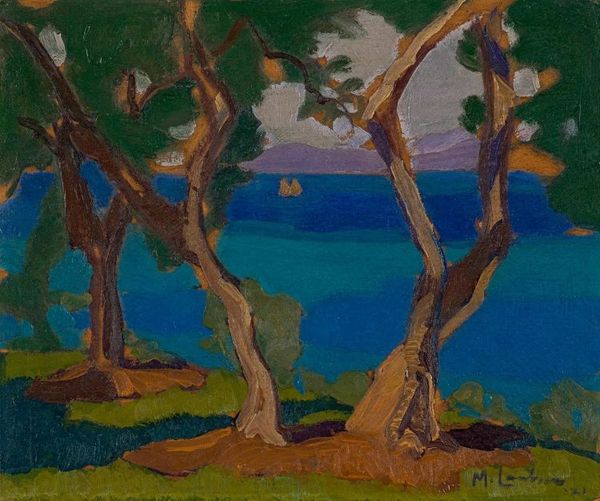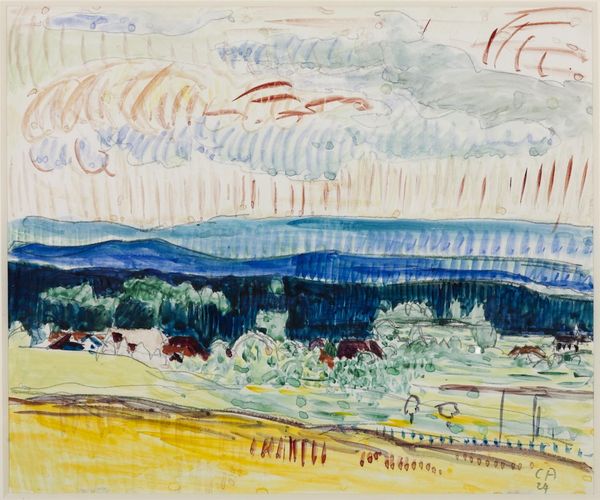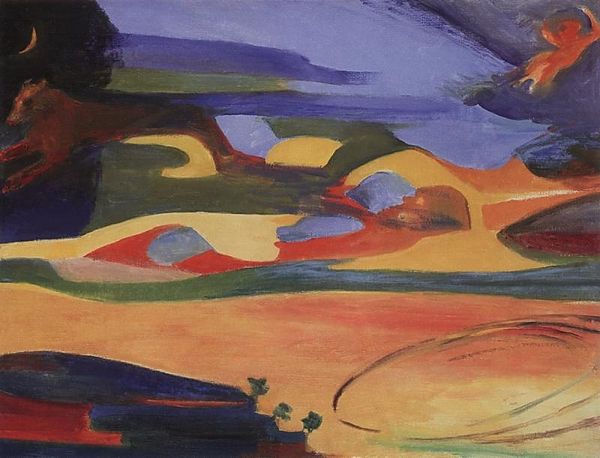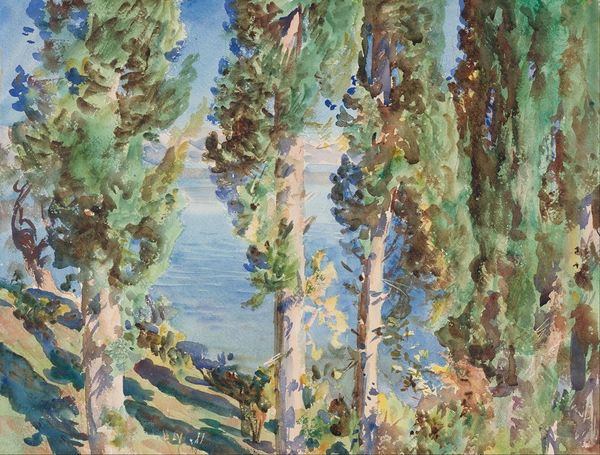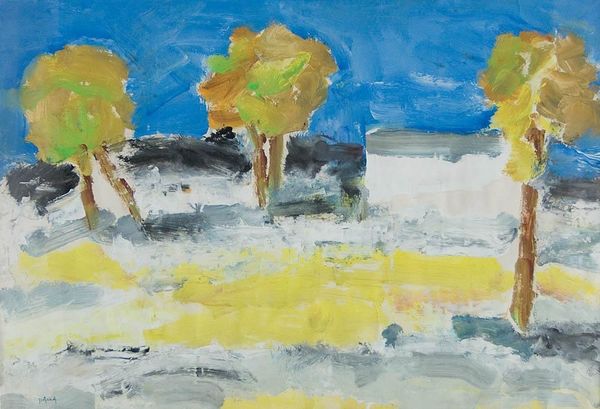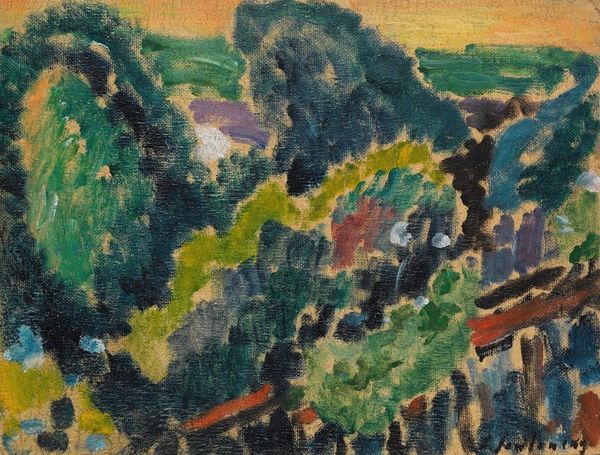
painting, pastel
#
painting
#
landscape
#
form
#
oil painting
#
line
#
pastel
#
post-impressionism
#
realism
Dimensions: 31.3 x 43.2 cm
Copyright: Public domain
Curator: Let's turn our attention to Paul Gauguin's "View of the beach at Bellangenai," dating to 1889. It resides in a Private Collection, and you'll notice it combines pastel and oil painting. Editor: Well, first impressions: that azure blue band of water against the ochre-orange of the land creates an intensely saturated horizon line. It’s striking in its almost harsh juxtaposition of colour. Curator: Gauguin uses these colours almost symbolically, wouldn't you say? The gold perhaps representing a kind of spiritual wealth of the landscape, the deep blues and greens of life, and the darker hues closer to earth grounding everything. Remember his focus on synthesism—flattening the image to intensify those deeper feelings? Editor: The linearity here fascinates me—long, emphatic strokes of colour building forms. And those sketchy elements too. See how the drawing itself functions almost as part of the overall effect? Curator: Yes, the visible layering suggests his creative process itself becomes part of the narrative. I sense echoes of Polynesian art styles in his abstraction and perspective shifts here; he wasn’t just rendering a beach, he was interpreting a culture. It almost feels like a dreamscape—a spiritual echo of that physical place. Editor: Interesting point, and perhaps why the picture has such potency despite its small size. We have a few trees dotting the landscape. See how he almost uses calligraphic gestures to delineate the form of each, it almost functions as its own symbol. They are simple marks. Curator: I think these forms add to a reading about connection, between human understanding, and nature. Even his use of impasto here, building a kind of topographic map in the colours themselves, suggests the lived reality, the physical reality but then there are also his other ideas superimposed on this natural place. Editor: It leaves us questioning where reality begins, and where Gauguin's imaginative vision truly starts. Curator: Absolutely. And those traces echo still. Editor: Yes, the picture lingers in the mind, not just as a place, but a thought.
Comments
No comments
Be the first to comment and join the conversation on the ultimate creative platform.

